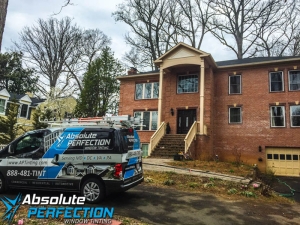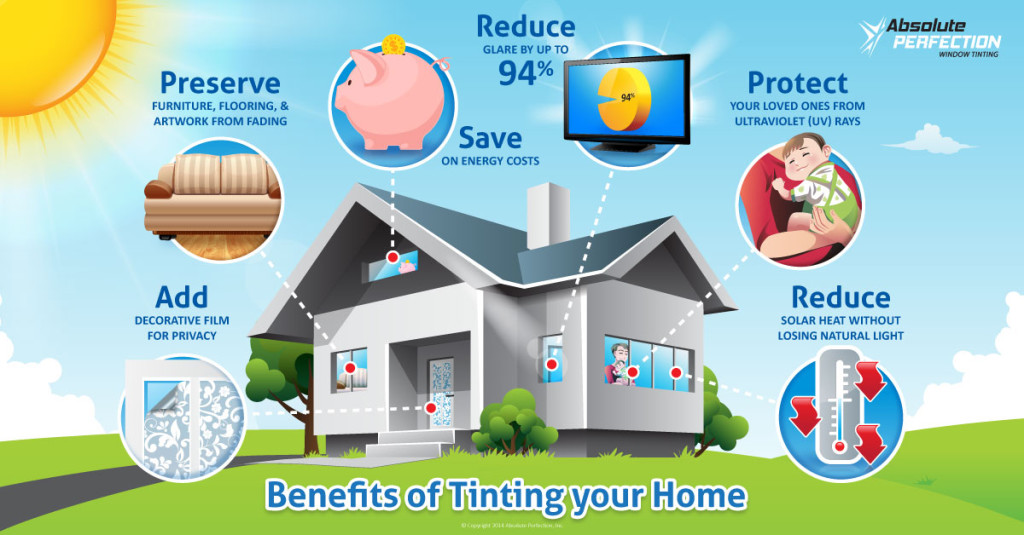Increase HVAC Efficiency & Save Money on Utilities with House Window Tinting
House window tinting can save money on utilities, reduce energy waste, and increase HVAC efficiency…
Heating or cooling the air in your home or office only takes the flip of a switch or turn of a dial. But the costs are a different story — both the monetary costs of high utility bills and the unintended increase in fossil fuel consumption.
Reducing the HVAC system load helps save money on utilities and helps the environment by reducing your carbon footprint. Thankfully, you don’t have to work in the dark or sacrifice comfort to increase HVAC efficiency and reach those goals (click here to contact us for a free estimate).
House window tinting provides a cost-effective way to decrease demand on the HVAC system, help keep the budget in line, and protect the environment.

New low-e (“low emissivity”) window film technology goes way beyond what you would expect from house window tinting. Low-e products like Enerlogic don’t just reduce solar heat during the summer, they also reflect heat back in to your home during the winter! Low-emissivity window films help reduce the load on HVAC systems year round instead of only in the summer.
Added to the solar heat-blocking characteristics is an insulating or heat-retaining quality that reduces radiant heat loss through the glass when temperatures are cold outside. With this revolutionary and award-winning new window film technology, you can reduce your heating bills as well as increase HVAC efficiency (click here to learn more about Enerlogic).
Windows Factor Greatly into Your Home’s Heat Gains and Losses
Passive solar heat is measurable. Ambient temperature increases when sunlight shines through windows, and expensive furnishings and carpets fade. The increased risk of cancer as a result of human exposure to harmful UV rays is also a factor that should be considered strongly when weighing the benefits of installing home window tinting.
The natural reaction to heat gain is to turn up the air conditioning. Closing blinds or drapes is another sun-blocking measure, but that leads to increased interior lighting demands, and a greater demand for electricity.
Summer isn’t the only time windows allow heat transfer. In colder months, heated indoor air is often lost through the glass, which means the heat system switches on more frequently and runs longer.
House Window Tinting Makes Single- and Double-Pane Windows More Efficient
Insulated replacement windows help manage heat transfer, but this is an expensive and unnecessary choice. Advanced window film technology like Enerlogic matches the benefit of energy-efficient replacement windows at a fraction of the cost.
A layer of Enerlogic window film, which is installed on the interior side of the glass, makes single-pane windows as efficient as double-pane replacements. Double-pane windows perform like three insulated panes of glass. With a 75% reduction in solar heat gain, ambient temperature is significantly decreased.

Lower Cost and High Efficiency Bring a Quicker Return on Investment
Replacement windows are expensive — not just for materials, but also the installation labor involved. Window film provides the same efficiency with minimal installation labor at a fraction of the overall cost (click here to CONTACT US).
Technologically-advanced window film is made from polyester with an adhesive backing. The surface is scratch-resistant and lasts for years, and installation involves only application to the glass, not window removal.
Adding window film to your office building’s windows can earn you up to 9 LEED credits toward Green Building Certification. Best of all, the measurable reduction in HVAC load means window film pays for itself in three years or less.
Energy efficiency, year-round comfort and reduced utility costs make window film a smart choice. Click here to contact us for a free, no obligation estimate!
